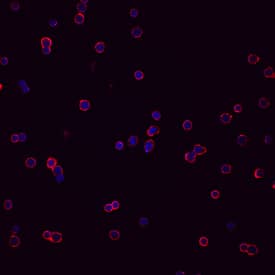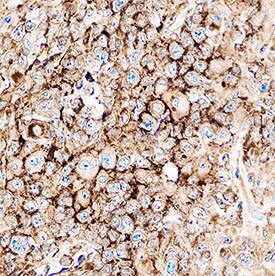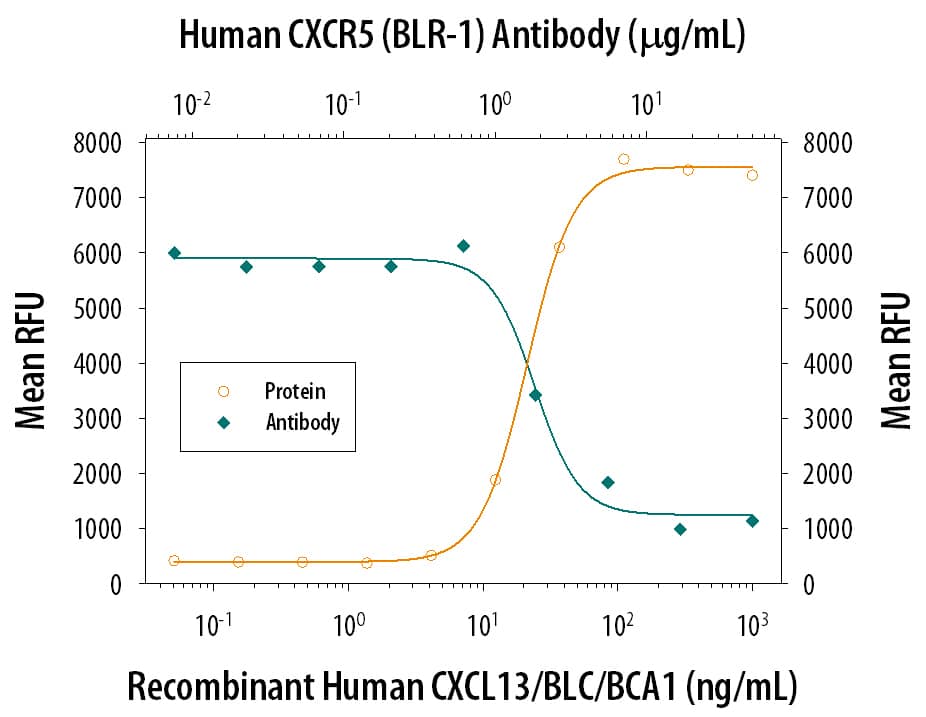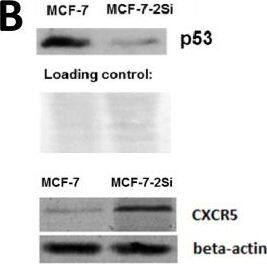Human CXCR5 Antibody
R&D Systems, part of Bio-Techne | Catalog # MAB190
Clone 51505 was used by HLDA to establish CD designation

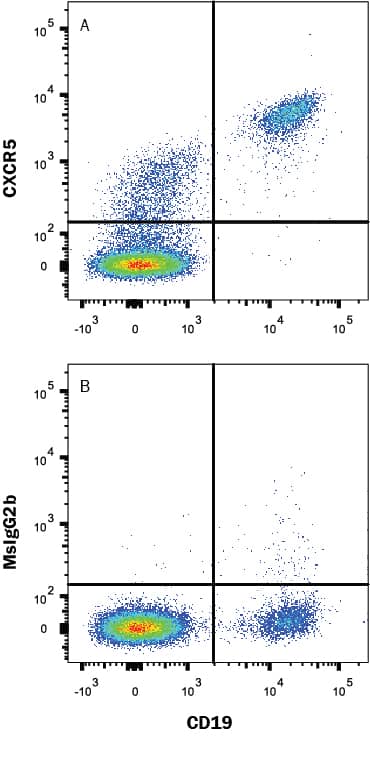
Conjugate
Catalog #
Key Product Details
Validated by
Knockout/Knockdown
Species Reactivity
Validated:
Human
Cited:
Human, Rat, Rabbit
Applications
Validated:
Immunohistochemistry, Neutralization, Flow Cytometry, Immunocytochemistry, CyTOF-reported
Cited:
Immunohistochemistry, Immunohistochemistry-Paraffin, Immunohistochemistry-Frozen, Western Blot, Neutralization, Flow Cytometry, Immunocytochemistry, Biacore Binding Assay, Bioassay
Label
Unconjugated
Antibody Source
Monoclonal Mouse IgG2B Clone # 51505
Product Specifications
Immunogen
NS0 mouse myeloma cell line transfected with human CXCR5
Met1-Phe372
Accession # P32302
Met1-Phe372
Accession # P32302
Specificity
Stains human CXCR5 transfectants but not the parental cell lines in flow cytometry. Does not cross-react with human CXCR2, CXCR3, or CXCR4 transfectants.
Clonality
Monoclonal
Host
Mouse
Isotype
IgG2B
Endotoxin Level
<0.10 EU per 1 μg of the antibody by the LAL method.
Scientific Data Images for Human CXCR5 Antibody
Detection of CXCR5 in CD19+ Human PBMCs by Flow Cytometry.
Human peripheral blood mononuclear cells (PBMCs) were stained with Mouse Anti-Human CD19 APC-conjugated Monoclonal Antibody (Catalog # FAB4867A) and either (A) Mouse Anti-Human CXCR5 Monoclonal Antibody (Catalog # MAB190) or (B) Mouse IgG2B control antibody (Catalog # MAB0041) followed by anti-Mouse IgG PE-conjugated secondary antibody (Catalog # F0102B). View our protocol for Staining Membrane-associated Proteins.CXCR5 in Human PBMCs.
CXCR5 was detected in immersion fixed human peripheral blood mononuclear cells (PBMCs) using Mouse Anti-Human CXCR5 Monoclonal Antibody (Catalog # MAB190) at 10 µg/mL for 3 hours at room temperature. Cells were stained using the NorthernLights™ 637-conjugated Anti-Mouse IgG Secondary Antibody (red; Catalog # NL008) and counterstained with DAPI (blue). View our protocol for Fluorescent ICC Staining of Non-adherent Cells.CXCR5 in Human Kidney.
CXCR5 was detected in immersion fixed paraffin-embedded sections of human kidney using Mouse Anti-Human CXCR5 Monoclonal Antibody (Catalog # MAB190) at 5 µg/mL overnight at 4 °C. Tissue was stained using the Anti-Mouse HRP-DAB Cell & Tissue Staining Kit (brown; Catalog # CTS002) and counterstained with hematoxylin (blue). Specific staining was localized to cell membranes. View our protocol for Chromogenic IHC Staining of Paraffin-embedded Tissue Sections.Applications for Human CXCR5 Antibody
Application
Recommended Usage
CyTOF-reported
Ferrell, P.B., Jr. et al. (2016) PLoS ONE 11: e0153207. Ready to be labeled using established conjugation methods. No BSA or other carrier proteins that could interfere with conjugation.
Flow Cytometry
0.25 µg/106 cells
Sample: Human peripheral blood CD19+ B cells
Sample: Human peripheral blood CD19+ B cells
Immunocytochemistry
8-25 µg/mL
Sample: Immersion fixed human peripheral blood mononuclear cells (PBMCs)
Sample: Immersion fixed human peripheral blood mononuclear cells (PBMCs)
Immunohistochemistry
8-25 µg/mL
Sample: Immersion fixed paraffin-embedded sections of human lymph node and human kidney
Sample: Immersion fixed paraffin-embedded sections of human lymph node and human kidney
Neutralization
Measured by its ability to neutralize CXCL13/BLC/BCA‑1-induced chemotaxis in the BaF3 mouse pro‑B cell line transfected with human CXCR5. The Neutralization Dose (ND50) is typically 0.25-1.5 µg/mL in the presence of 0.05 µg/mL Recombinant Human CXCL13/BLC/BCA‑1.
Reviewed Applications
Read 3 reviews rated 4.7 using MAB190 in the following applications:
Formulation, Preparation, and Storage
Purification
Protein A or G purified from hybridoma culture supernatant
Reconstitution
Reconstitute at 0.5 mg/mL in sterile PBS. For liquid material, refer to CoA for concentration.
Formulation
Lyophilized from a 0.2 μm filtered solution in PBS with Trehalose. *Small pack size (SP) is supplied either lyophilized or as a 0.2 µm filtered solution in PBS.
Shipping
Lyophilized product is shipped at ambient temperature. Liquid small pack size (-SP) is shipped with polar packs. Upon receipt, store immediately at the temperature recommended below.
Stability & Storage
Use a manual defrost freezer and avoid repeated freeze-thaw cycles.
- 12 months from date of receipt, -20 to -70 °C as supplied.
- 1 month, 2 to 8 °C under sterile conditions after reconstitution.
- 6 months, -20 to -70 °C under sterile conditions after reconstitution.
Background: CXCR5
Alternate Names
BLR1, CD185, CXCR5
Gene Symbol
CXCR5
UniProt
Additional CXCR5 Products
Product Documents for Human CXCR5 Antibody
Product Specific Notices for Human CXCR5 Antibody
For research use only
